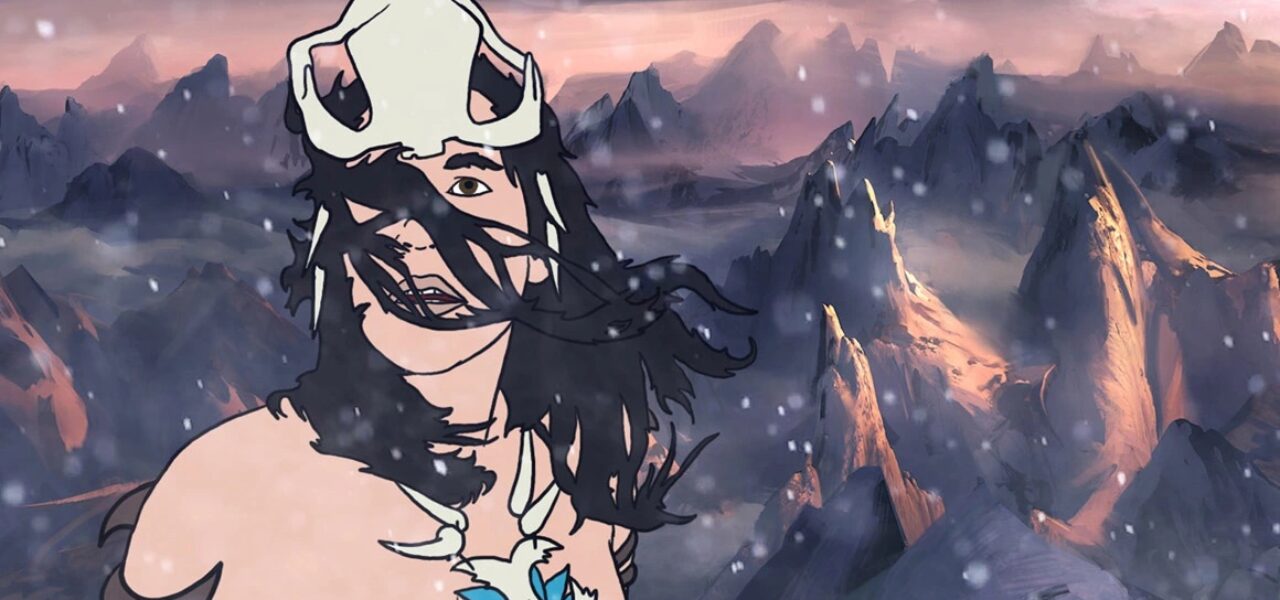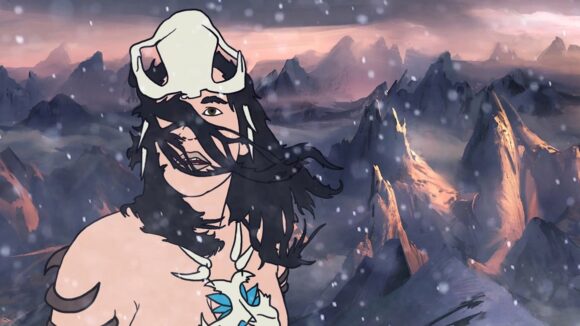

‘The Spine Of Night’ Directors On Making A ‘Very Naked, Very Violent’ Fantasy Film
“Who would finance a very naked, very violent, rotoscoped animated fantasy film?”
This is the question Morgan Galen King and Philip Gelatt asked themselves when sitting down to create The Spine of Night, as Gelatt tells us. Having cobbled together a budget, chiefly from their own purses, the pair finished their feature — which they co-wrote and co-directed — last year. It is now in the running for an Oscar.
Watch Galen King and Gelatt speak about the film to INBTWN Animation, the official online event partner of Cartoon Brew, below:
Spanning centuries, the plot follows the effects of a mysterious power called “the bloom” as it echoes through the ages. Drawing heavy inspiration from sci-fi novel A Canticle for Leibowitz by Walter M. Miller Jr., Galen King and Gelatt developed an anthology structure to tell a sweeping story.
As Galen King says, “You see the echoes of the past work their way through the centuries … From the very beginning, we wanted to have it not be purely anthological, but using sort of an anthology structure to tell a larger story in the manner of A Canticle for Leibowitz. We tried to work that into everything,” from the score to the design. The film even includes a repeating shot that was repainted in the style of four different eras.
The Spine of Night is violent, but it also makes clear the cost of using violence. “It’s often the case in heroic films, which is a big part of fantasy, that [solving] problems with violence almost always still seems glorified and noble,” says Galen King. He draws more from horror films, where sheer violence often fails to get results: “You don’t defeat evil by pummelling it to death.” The filmmakers tell us about the challenge of striking a balance between showing violence morally and making it entertaining.
“Clearly, we have enjoyed making this violence on the screen,” says Gelatt. “There’s a lot of care put into those deaths. That to me is interesting too – the ambiguity of being both horrified by it but also sort of attracted to it and appreciating the bone-crunching impact of it.”
The film is rotoscoped in the manner of movies Galen King watched in his childhood, like Ralph Bakshi’s The Lord of the Rings and Gerald Potterton’s Heavy Metal. “I fell in love with the Bakshi look,” recalls Galen King. “When I wanted to sit down and work on this, it just felt like the obvious aesthetic that I missed.”
The project began when Gelatt, whose writing credits include Netflix’s Love, Death + Robots, contacted Galen King after seeing his rotoscoped short Exordium in 2013. They immediately began to conceptualize what would become The Spine of Night, and shot the reference footage in 2014. The shoot let them and the actors improvise, giving birth to ideas they feel enriched the detail of their world.
The directors initially self-financed the production. “We didn’t even try to get it financed in a Hollywood way,” says Gelatt, who is also a producer on the film. “I just imagined that sequence in The Muppets Take Manhattan where all the doors slam in their faces.” But this approach ended up being a “shortcut to a long road,” as the feature took eight years to finish. After they had done a large part of it, the team found more funding, which allowed them to find the voice cast — led by Richard E. Grant — and complete the film.
The Spine of Night is available to watch on digital video on demand. Watch it now.

